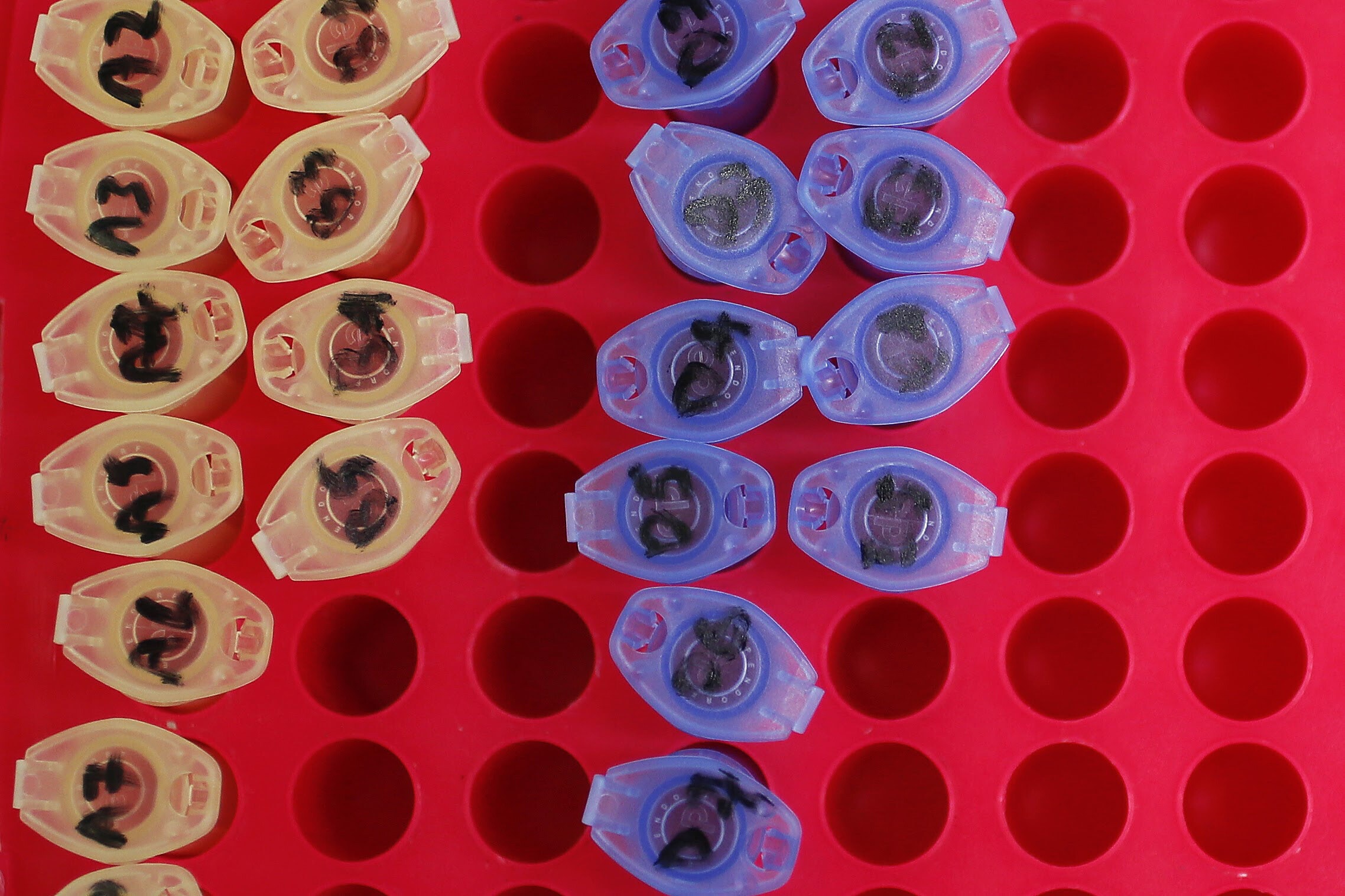How vertical farming can make you a better eater

Healthy, or sick, which would you choose?
Though the data has been there for years, there is a growing awareness in America about how powerful the relationship between our diets and our health is. To many readers here, that’s probably incredibly obvious, but what might not be so obvious is how much easier it’s going to be to support that relationship.
Urban vertical farming is one of the fastest growing trends in food production. One study found that the market for “plant factories,” what vertical farms are known as in Asia, was about $403 million in 2013 and had the potential to reach $1.97 billion by 2020. Though this includes sales of materials like LED lights and hydroponic pieces, it still speaks to the insatiable growth of the industry.
If this is new to you, go ahead and catch up on some required readings for vertical farming here, but vertical farming is essentially a form of controlled environment agriculture (an industry term for something like a greenhouse) with multiple levels of growth maximizing not only horizontal, but also vertical space.
But how can it make you healthier? Though there are even more, the 4 main health benefits that come with vertical farming are fresher food, increased urban availability, pollution reduction, and no chemical use.
Fresh Food
First, let’s look at fresher food. Where vertical farming has flourished, it is because of high population density. Perhaps the best example of where vertical farming has taken off is Singapore. Here, demand for fresh food is at a premium; high population density, almost 100% urbanization, and minimal space for conventional cropland combine to limit the availability of fresh produce for many people.
However, Instead of consigning their future to imports from other Asian countries, Singaporeans have demanded their food be grown close to them without any artificial, long-term storage techniques that degrade nutrition. For example, one study found that increased storage time results in nutrient loss in strawberries.
When food is grown locally, not only does it stay fresh longer, spared an arduous shipping and refrigerating process, but no artificial preservatives, like wax coatings, are needed to keep it consumer-ready.
Increased Availability
Alongside the concept of fresh food, increased urban availability is inherent with vertical farms. This type of farming is expensive to set up; as such, right now it only makes sense to do so where there is a high population and a high demand. Urban centers, like Singapore above, make the most sense.
The health benefit comes from converting food deserts to vertical farm oases. According to the USDA, “Food deserts are defined as urban neighborhoods and rural towns without ready access to fresh, healthy, and affordable food. Instead of supermarkets and grocery stores, these communities may have no food access or are served only by fast food restaurants and convenience stores that offer few healthy, affordable food options.”
According to a Food Trust analysis of USDA and other research data, low income areas of the country have half as many supermarkets compared to wealthy areas. They further cite that only 8% of African Americans live in a census area tract with a supermarket, compared to 31% of whites. These numbers are unacceptable and perfectly highlight the necessity of providing food to poor, urban areas.
Additionally, vertical farms can supply pre-existing businesses with a new product without having to pay exorbitant shipping and processing fees. This is due to increased efficiency of vertical farms as well as their proximity to the point of sale. Availability of healthful options as opposed to convenience store processed foods will make it easy for people who want to be healthy to do so.
Pollution Reduction
Costs are not the only detrimental effects of shipping our food either. A study out of Iowa State University found that, on average, food travels 1,518 miles from harvest to plate through a network of semitrailer trucks. According to the WorldWatch Institute, the same team “found that the conventional food distribution system used 4 to 17 times more fuel and emitted 5 to 17 times more CO2 than the local and regional (the latter of which roughly meant Iowa-wide) systems. Similarly, a Canadian study estimated that replacing imported food with equivalent items locally grown in the Waterloo, Ontario, region would save transport-related emissions equivalent to nearly 50,000 metric tons of CO2, or the equivalent of taking 16,191 cars off the road.” (WorldWatch)
So how does this become a health issue? The World Health Organization classifies air pollution as a “major environmental health risk” that accounts for 3.7 million premature deaths worldwide each year. Poor air quality causes stroke, heart disease, lung cancer, and both chronic and acute respiratory diseases. Industrial neighborhoods in urban cities are particularly hard hit as diesel trucks grind the pavement in a never-ending cycle of transportation pollution. (WHO)
However, these same neighborhoods make perfect candidates for vertical farms. For example, both The Plant, a non-profit vertical farm in Chicago, and Green Sense Farms, a huge commercial venture in Portage, Indiana, are using converted warehouse space to grow their produce. These warehouses are in old industrial areas and represent a transformation from artifical blight to community contribution.
Why might this be the case? Warehouses are the affordable, realistic version of the skyscraper behemoths pictured in many articles on vertical farming. As technology continues to improve (imagine, commercial vertical farms didn’t really exist as little as five years ago) this is subject to change. For now though, it’s important because farming in these warehouses improves the air quality of the industrial neighborhoods they inhabit; often the hardest hit communities. For example, in the Bronx, where asthma rates are 3 times higher than the nation’s average, imagine the impacts of removing all the trucks shipping produce from the streets and filling the area with carbon dioxide sequestering greenery. At the very least, a local vertical farm would reduce the distance those trucks had to drive.
Pesticide Free
Not only is the food produced in vertical farms fresh, local, and good for environmental air quality, it’s also pesticide free. Vertical farming is an extension of what’s called controlled environment agriculture (CEA). Often using hydroponic growing techniques and implementing biological controls (think ladybugs eating aphids), there is no need to contaminate crops with toxic chemicals. On the other hand, “U.S. pesticide expenditures totaled $11.8 billion in 2006 and $12.5 billion in 2007” according to the US Environmental Protection Agency. That’s millions of pounds of pesticides dumped into our environment every single year.
While many may jump and say farmers wouldn’t be allowed to use those pesticides if they weren’t safe, the regulations that are supposed to protect us fall short in a number of ways. First, the EPA regulates pesticides individually. So while there is a limit on the maximum amount of a particular pesticide that can touch your food, there is no limit to all the different individual pesticides that can combine on it. This is problematic because of the potentially dangerous and unstudied chemical reactions that take place between these highly volatile compounds.
Second, pesticides have a cumulative toxic loading effect. Each person’s body processes these pesticides in a different way and gets rid of them at different speeds. Some pesticides stay in your body for years. So even if a certain quantity of a single substance is regulated, that quantity builds up over time, combining with what you’ve already been exposed to.
Finally, pesticides have unstudied effects on infant health while in the womb. For example, glyphosate, the active ingredient in Round Up, was found in the breast milk and Pediasure products despite the increased risk of harm to developing organs.
Conclusion
While there are certainly other alternatives, such as USDA Organic, it’s the potential for such high measures of productivity that mark vertical farms as special. Studies again and again indicate that current vertical farms are up to 10x as productive as soil based agriculture as they stack multiple levels of growth. One farm in Japan has been producing 100x what a conventional farm could produce on the same land with 80% less waste and 99% less water than a field of the same size! As the technology improves to take these farms higher and higher, that difference in production, and the health benefits for all of us, will grow as well.
This article is published in collaboration with Sustainable Cities Collective. Publication does not imply endorsement of views by the World Economic Forum.
To keep up with the Agenda subscribe to our weekly newsletter.
Author: Evan Bromfield is a Writer at the Urban Vertical Project.
Image: A worker harvests fresh produce from a tower at Sky Greens vertical farm in Singapore. REUTERS/Edgar Su.
Don't miss any update on this topic
Create a free account and access your personalized content collection with our latest publications and analyses.
License and Republishing
World Economic Forum articles may be republished in accordance with the Creative Commons Attribution-NonCommercial-NoDerivatives 4.0 International Public License, and in accordance with our Terms of Use.
The views expressed in this article are those of the author alone and not the World Economic Forum.
Stay up to date:
Agriculture, Food and Beverage
Forum Stories newsletter
Bringing you weekly curated insights and analysis on the global issues that matter.







